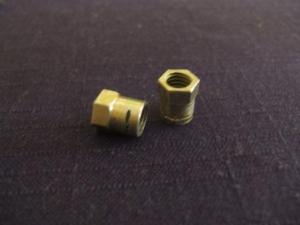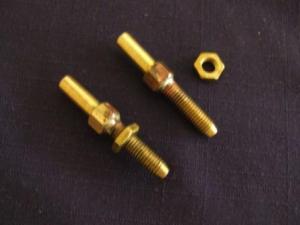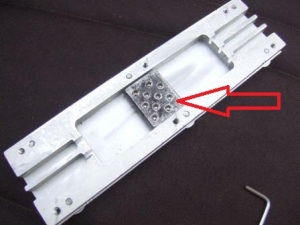It turns out that the compression is just fine; my methodology was wrong! Now I have learnt a bit more; to perform a proper compression test you need to do the following:
- Take out ALL the spark plugs- that is, one from each cylinder (the BMW engine has two per cylinder) so that the engine is not turning against any compression.
- Screw your compression tester into a plug hole in one cylinder (the other plug hole in the same cylinder should have a normal plug in it so that compression will be experienced in that cylinder)
- Before starting the compression test, by cranking the engine over a few times, open the throttle full wide (WOT or Wide Open Throttle in engine tuning parlance). This was the problem that I had; the initial travel of butterfly valve is non-linear and very sensitive, so the slightest difference in the position of the butterfly valve here will show up as a difference in the compression from cylinder to cylinder. When the throttle is fully open, the butterfly valve is not impeding the inflow of air to the cylinder and you get a better reading. For example, with the throttle closed I was reading around 800kPa per cylinder, and 1000kPa with the throttle open- and with very little difference between cylinders.
After doing all that I realised that the throttle mixer, where the two cables going to the throttle bodies ‘mixed’ with the three possible throttle inputs (main foot throttle, secondary instructor throttle and cruise throttle), was a problem. The adjustors for the cables were not great, having been made to expedite getting the aircraft to a testing phase, rather than for long term reliability and indeed even short term quick and accurate testing and setting. A BMW mechanic drew a sketch of part of the original adjustment arrangement and I was able to machine the parts from a hexagonal steel bar, tapping the threads as required. The adjusting threaded cable holders were made in two parts from brass and soldered together.
arrangement and I was able to machine the parts from a hexagonal steel bar, tapping the threads as required. The adjusting threaded cable holders were made in two parts from brass and soldered together.
Next was the mixer itself; what a bugger! I had the body laser cut and then machined the central cable holder from mild steel. My plan was to have the central cable holder tie it all together and have each cable held in place by two 4mm grub screws. It seemed like a very good idea.
The central cable holder/ mixing block is shown arrowed:
Then I put it into practice and found out why you need to have your actuating (main throttle, second throttle, cruise throttle) cables free to move… if the main throttle cable pulls the central cable holder down the slide and the other cables are fixed to it they then twist the cable holder one side and jam it up when you release the main throttle. The cables have to be able to move freely through the cable holder.
Trouble is, one wants an anchor on the cable that will hold it solidly and indefinitely, but that can still be adjusted and fairly easily removed so that you can maintain the cable.
The trouble with the present mixers is that they require a swaged cable end, which means that, if you get it wrong on assembly (which is easy to do) you have to cut the swage and then the cable is shorter; so now you need a new cable. And you cannot easily get to the cable sheath to lubricate it. So you have to cut it. And you start again. So my great plan was to provide a central cable holder that allowed adjustment and non-permanent holding of the cable that was still safe and secure.
But I discovered that you have to allow cables to move freely through the central mixing block (central cable holder). #$%&@*()%$# Back to the drawing board.
Jay

